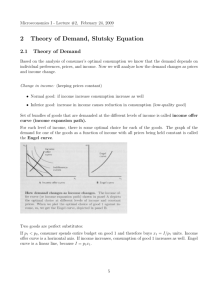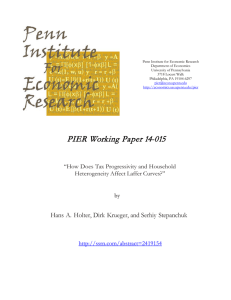Market Demand A. To get market demand, just add up individual
advertisement
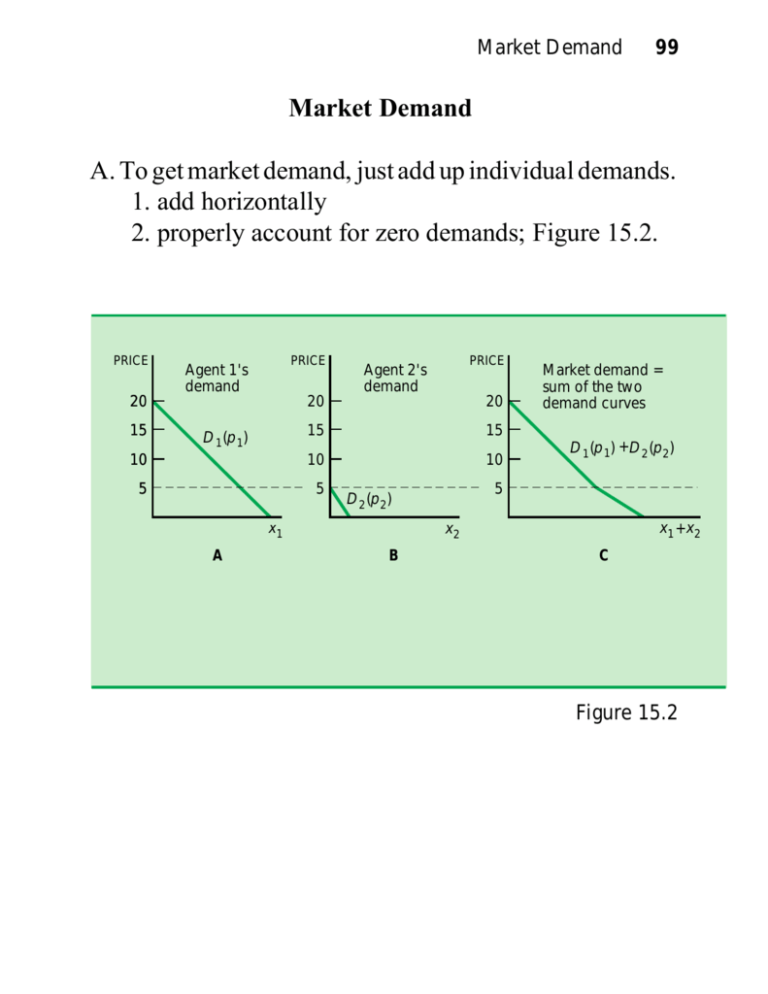
Market Demand 99 Market Demand A. To get market demand, just add up individual demands. 1. add horizontally 2. properly account for zero demands; Figure 15.2. PRICE 20 15 PRICE Agent 1's demand 20 PRICE Agent 2's demand 20 15 15 10 10 10 5 5 D1 (p 1) A D1 (p 1) + D2 (p 2) 5 D2 (p 2) x1 Market demand = sum of the two demand curves x1 + x2 x2 B C Figure 15.2 Market Demand 100 B. Often think of market behaving like a single individual. 1. representative consumer model 2. not true in general, but reasonable assumption for this course C. Inverse of aggregate demand curve measures the MRS for each individual. D. Reservation price model 1. appropriate when one good comes in large discrete units 2. reservation price is price that just makes a person indifferent 3. defined by u(0; m) = u(1; m p1 ) Market Demand Agent A's demand pA* Agent B's demand ..... pA* p B* ..... p B* xA A ..... 101 Demand market ..... xB B xA + xB C Figure 15.3 4. see Figure 15.3. 5. add up demand curves to get aggregate demand curve Market Demand 102 E. Elasticity 1. measures responsiveness of demand to price 2. p dq = q dp 3. example for linear demand curve a) for linear demand, q = a bp, so = bp=q = bp=(a bp) b) note that = 1 when we are halfway down the demand curve c) see Figure 15.4. 4. suppose demand takes form q 5. then elasticity is given by = Ap b b p bAp b 1 = q bAp = Ap b = b 6. thus elasticity is constant along this demand curve 7. note that log q = log A b log p 8. what does elasticity depend on? In general how many and how close substitutes a good has. Market Demand 103 PRICE |ε| = ∞ |ε| > 1 a/2b |ε| = 1 |ε| < 1 |ε| = 0 a/2 QUANTITY Figure 15.4 F. How does revenue change when you change price? 1. R = pq , so R = (p + dp)(q + dq ) = pq + pdq + qdp + dpdq 2. last term is very small relative to others 3. dR=dp = q + p dq=dp 4. see Figure 15.5. 5. dR=dp > 0 when jej < 1 Market Demand 104 PRICE q∆p p + ∆p ∆p∆q p p∆q q + ∆q q QUANTITY Figure 15.5 G. How does revenue change as you change quantity? 1. marginal revenue = MR = dR=dq = p + q dp=dq = p[1 + 1=]. 2. elastic: absolute value of elasticity greater than 1 3. inelastic: absolute value of elasticity less than 1 4. application: Monopolist never sets a price where jj < 1 --- because it could always make more money by reducing output. Market Demand 105 H. Marginal revenue curve 1. always the case that dR=dq = p + q dp=dq . 2. in case of linear (inverse) demand, p = a bq, MR = dR=dq = p bq = (a bq) bq = a 2bq. I. Laffer curve 1. how does tax revenue respond to changes in tax rates? 2. idea of Laffer curve: Figure 15.8. TAX REVENUE Maximum tax revenue Laffer curve t* 1 TAX RATE Figure 15.8 Market Demand 106 3. theory is OK, but what do the magnitudes have to be? 4. model of labor market, Figure 15.9. BEFORE TAX WAGE S Supply of labor if taxed S' Supply of labor if not taxed Demand for labor w L L' LABOR Figure 15.9 5. tax revenue = T = twS (w(t)) (1 t)w 6. when is dT=dt < 0? where w(t) = Market Demand 107 7. calculate derivative to find that Laffer curve will have negative slope when dS w > 1 t dw S t is :50, would need 8. so if tax rate labor supply elasticity greater than 1 to get Laffer effect 9. very unlikely to see magnitude this large

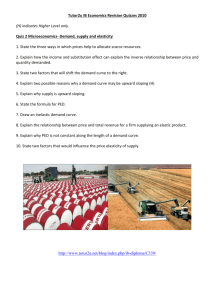
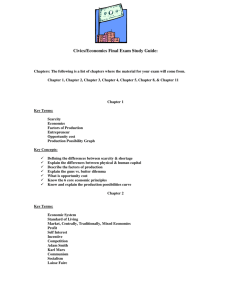

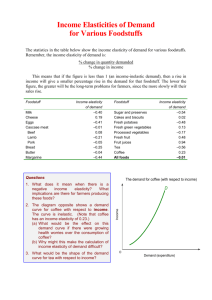
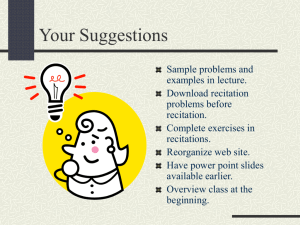

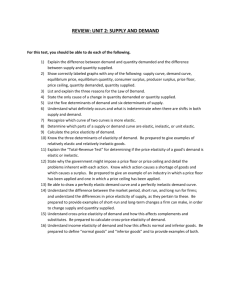
![Problem Set 2 Answer Key 1) = [ (600-500) / 500 ] / [ (7,5](http://s3.studylib.net/store/data/007545927_2-a14d6cb799111def938fd71314890ee2-300x300.png)
